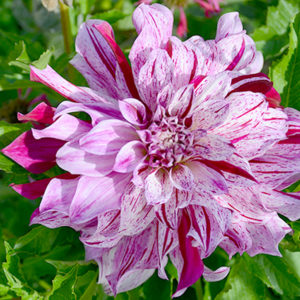Description
 Herb, Basil Lemon
Herb, Basil Lemon
It may be hard to believe but basil was once a much feared herb. Many thought that it caused or contributed to madness. It is native to India and parts of Africa and Asia. In India it is a sacred herb dedicated to the gods Vishnu and Krishna and is worshiped more highly than kings. Though it may have been feared in early 17th century Europe by the mid-17th century, it was a treasured seasoning and it accompanied many colonists as they left Europe and settled in North America.
Make sure your plants are grown in full sun and the soil kept slightly moist. Do not let Basil Genovese, Sweet Italian, Lemon or Dark Opal Purple flower. As soon as the flower spike emerges from the center of the plant, cut it. If allowed to flower, the plant stops growing. Leaves can be harvested throughout the summer by trimming individual stems.
If your soil is rich in organic matter, you do not have to fertilize basil. Basil is very sensitive to cold. If, during the summer, you have a cold spell, the plants may develop rust spots as a reaction to the cold. Even a mild frost in the fall will kill the plants.
Basil is among the easiest of plants to grow in a container. A single basil plant can be grown in as small as a 6-inch diameter pot and will be enough basil to feed a family of four fresh basil. If your intent is to make pesto or store basil, then you will need 4-6 plants.
The Best Soil Mix for Containers
The absolutely best soil mix for containers is 60% crummy backyard soil, 20% peat moss and 20% dehydrated cow manure or, even better, compost. If you blatantly refuse to use backyard soil then purchase topsoil (not potting soil, special soil mixes, premium soil). Mix the ingredients together and pour into a pot.
Plants Per Container
6-inch container – 1 plant
8-inch container – 2 plants
10-12-inch container – 3 plants
14-inch container – 4 plants
Sprinkle seeds around the surface of the soil in the container and cover with 1-2 inches of soil. Pat the soil down firmly. Water generously and keep the soil moist until the sprouts emerge. When the sprouts are 1 inch tall, thin, leaving seedlings 6 inches apart. Use the discarded seedlings as sprouts in a salad or as a garnish on soups and stews.
Make sure the containers are in full sun and water frequently as soon as the soil surface is dry. You do not need to fertilize is there is plenty of organic matter in your soil (peat moss and compost/manure).
One suggestion for basil gardeners, sometimes it is nice to refresh your basil crop by planting seeds again in August. For gardeners in Hardiness Zones 8-10, this is heartily recommended, but it can also work well for gardeners in Hardiness Zones 5-7.





